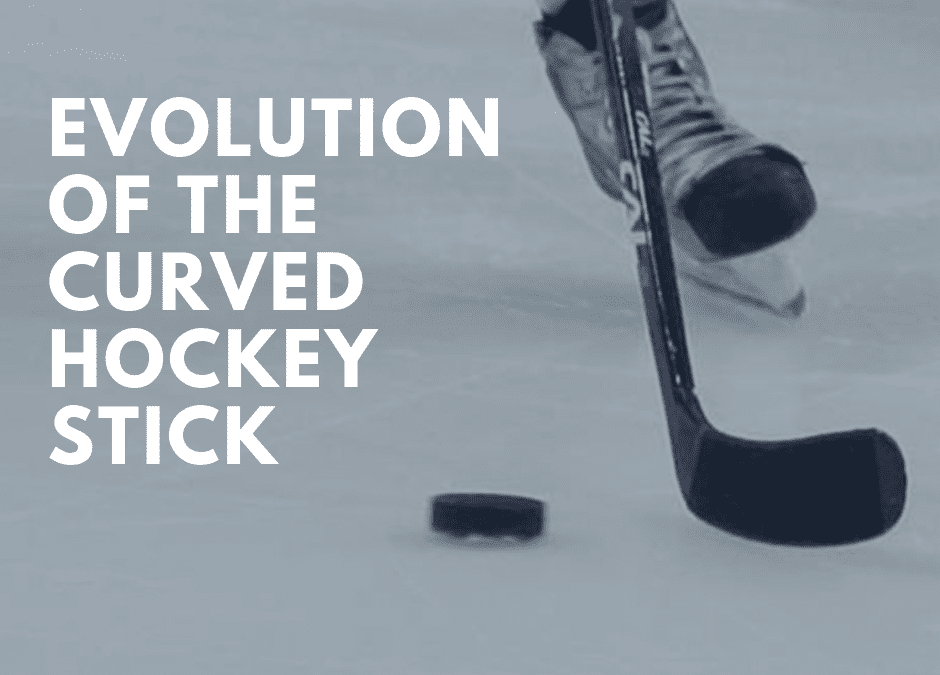Hockey has been around for almost two centuries now, providing a source of exercise and unmatched fun for all its participants. It’s played by children and adults alike, and the NHL is literally a billion-dollar industry, televising hockey games featuring the best players in the world for anyone to watch.
It makes sense then, that for as long as the sport of hockey has existed, so has the hockey stick. You just can’t play hockey without your trusty stick.
Over the last 200 years, hockey sticks have gone through many improvements to be able to reach the current lightweight, modern style. They’ve been made lighter, stronger, and more flexible. Plus – believe it or not – the blade wasn’t always curved. In fact, until the 1960’s the blades of hockey sticks used to be flat and straight.
Even more unbelievably, the modern curved-blade design we know and love was created by accident! Here’s the story:
Prior to the Curve
It’s widely believed that the first ever hockey sticks were made in the late 1700’s by the Mi’kmaqs.
I’m sorry- the what?
The Mi’kmaqs (pronounced mick-macks) are a group of First Nations people indigenous to the eastern part of Canada. One of the things they did for fun was play a ball-and-stick game called tooadijik with long, curved sticks that they carved out of hornbeam trees.
Then, they got the idea to make the game a bit more challenging by using ice as a playing surface instead of just grass. That way, they could still play their game in the wintertime. They began producing more and more sticks as hockey gained popularity within the Mi’kmaq group and beyond.
By the mid-1800’s, the Starr Manufacturing Company was selling and distributing the Mi’kmaq-made hockey sticks. Once hockey really started picking up speed in the early 1900s, sticks were being mass-produced for the hoard of eager players that wanted to join in on the fun.
Between the 1920’s and the 1940’s, stick manufacturing companies tossed away their single-piece designs, opting for hockey stick designs that used two or three separate pieces of wood. Starting in the 1950’s manufacturers used fibreglass to reinforce the blades and shafts of the wooden sticks to make them more durable.
There, now you’re all caught up to the important part: the invention of the curved blade!
Some of the Best Discoveries Are Entirely Unplanned
Stan Mikita played for the Chicago Blackhawks from 1958 to 1980. Mikita had an illustrious career, winning the Lady Byng Memorial trophy and contributing to the Blackhawks’ success. His largest contribution to hockey, however, came during a practice in 1962.
Right as Mikita was about to head onto the ice, the blade of his stick got caught in the bench door and bent into a “v” shape. Not wanting to take the extra time to change his stick, Mikita figured he would still use it with the bent blade.
The result was the exact opposite of what Mikita expected: the bent blade improved his hockey shot!
But how? He was using a broken stick!
Broken, yes, but broken in a good way. The bent blade allowed Mikita to have better puck control when he slid his stick across the ice to take a shot. With a straight blade, unless you move your stick perfectly forward, the puck will likely move either to the left or right of its original position on the blade. This reduces the accuracy of a shot and limits the amount of power you can use when shooting the puck.
The bent blade, however, creates a cradle for the puck, ensuring that it won’t move along your blade as you shoot it. This allows you to focus more on power and good stick movement when taking a shot, rather than having to worry about accuracy so much.
Mikita’s blade bending was the perfect example of a happy accident – he didn’t know it at the time, but he would forever change the game of hockey.
Modern Hockey Sticks
After Mikita’s bent-blade accident, hockey sticks only went through two more major changes before reaching their current design.
First, around the late 1980’s, manufacturing companies started producing hockey sticks with aluminum shafts – the first time ever that the entire stick wasn’t made of wood. The aluminum shaft made the stick lighter, easier to handle, and even more durable.
Second, manufacturers have become something of “mad scientists” in recent years. Stick designs evolved from using aluminum to more composite material. A composite material is made from a bunch of different materials that, when combined, have desirable properties that none of the ingredient materials can achieve on their own.
If the individual metals they were trying to use weren’t durable, cheap, or light enough, then they combined metals until they found a material that satisfied all three. Many modern hockey sticks are made with any combination of:
- Wood
- Fiberglass
- Carbon
- Kevlar
- Aluminum
- Graphite
And there you have it! The evolution of the curved hockey stick.
Of course, all pieces of hockey equipment have gone through many changes over the years, not just hockey sticks. The changes are a good thing, though. Equipment continues to become more comfortable, easier to use, and more effective for hockey players. In the end it just makes for more competitive hockey games!







